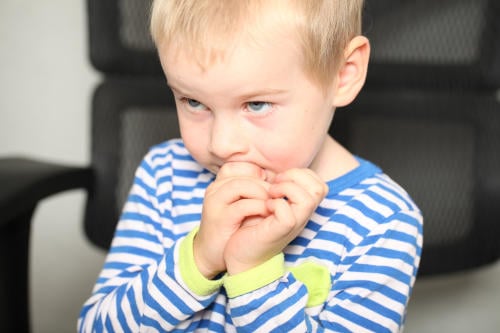According to the dictionary, ‘alexithymia’ is ‘the inability to recognise one’s emotions and describe them’. It often occurs as part of autism and other neurodiversities but can sometimes be connected to anxiety or depression.
However, as Kiera Adams, a PhD student at Oxford University points out, it’s a more complex condition that people think and can affect people in different ways.
Different Aspects to Recognising Emotions

Kiera is looking at the overlap between autism and mental health issues, and has researched alexithymia as part of her studies. She points out that there are two separate components to alexithymia – being able to identify emotions and being able to communicate what you’re feeling to other people. Some people might be OK at the first part but struggle to express this in words.
“Research has shown that before we know what we’re feeling, the body reacts first,” she explains. “Someone with alexithymia might experience the bodily sensations of an emotion but not know what this indicates. It can cause difficulties in life. A person who’s in tune with their emotions might notice if they were beginning to feel anxious, for example, and would remove themselves from the situation or use other coping mechanisms. With alexithymia, the person might not notice this right up to the point at which they’re overwhelmed and then they might have a meltdown or shut down.”
In addition, people with alexithymia might struggle with some emotions more than others, Kiera continues. “It’s to do with levels of arousal. They might find it difficult to tell whether they’re excited or nervous. There can also be confusion between sadness and anger – I remember meeting one person who was crying because they were angry. Feeling different things at once can also be confusing.”
Alexithymia Connected to Sensory Issues

Kiera maintains that the condition is strongly connected to interoception which is the awareness of what we’re feeling inside our bodies such as hunger, thirst or our need to use the bathroom. “Sensory abnormalities are common in autistic individuals and people can be ‘hypo’ or ‘hyper’ sensitive,” she continues. “If someone was hypersensitive to interoception, they might be aware of every heartbeat, for example, which can be anxiety-inducing.”
There might also be a link, she says, to a person’s ability to read facial expressions or identify how other people could be feeling – a well-known facet of ASC. “But it’s impossible to separate all the different factors. Things are always tangled up in the real world.”
Can You Help a Child to Identify Their Emotions?

Parents reading this might wonder whether there is a way to help their neurodiverse son or daughter to improve their ability to be more connected to their emotions. Kiera cautions that there is no straightforward method for this and that it’s a question of finding what works with each individual.
Some people, she suggests, find it useful to keep a diary documenting any meltdowns, for example. Once they’re calm again, looking back at what they were thinking, feeling and doing before the outburst might help them to identify patterns and potential stressors.
“There’s also been quite a lot of research into the benefits of mindfulness,” she carries on. “Taking the time to sit quietly and recognise how you’re feeling can help a person to become more familiar with their emotions. Parents and teachers can give children the space to pay attention to their feelings.”
If a child has difficulty describing how they feel in words, Kiera suggests trying picture cards, drawing an emotion or using a colour system for expression – again, different things will be effective for different people.
Treating Neurodiverse People as Individuals

Kiera became interested in the topic of autism as an undergraduate and looking back to her childhood, recognises some potential ASD traits in herself. “I was a picky eater and had sensory issues,” she recalls, “The seams on my clothing always felt so uncomfortable and sometimes, it would take me an hour to leave the house because, say, the seam on my socks felt like it was burning my skin! These experiences have made me sympathetic to autistic individuals. I think it’s important to conduct research that autistic people actually want and not what everyone else thinks they need help with.”




